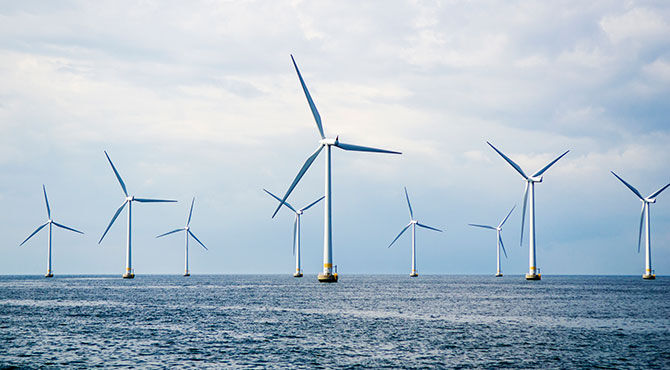UK offshore wind generation set to increase five-fold
Offshore wind farms in the UK are expected continue on a fast upward trajectory. The latest report suggests government policy could see output increase significantly by 2030.

 18 January 2018
18 January 2018Technical advancements pushing wind farms forward
At the same time, the report says that cost savings and technical advances could see contracts being awarded for sea turbines by 2025 that are effectively achieved with zero subsidies from the taxpayer.The report says that current government policies to encourage offshore wind could see output increase from the current six gigawatts to 30 gigawatts by the early 2030s.“In 2017, industry and supply chain maturation, aggressive competition, rapidly falling costs, and clarity over future government support combined to create significant optimism and momentum for offshore wind in the GB market,” says the report.“Aurora’s analysis indicates that the same confluence of factors that fuelled this optimism is set to transform the economics of offshore wind. Massive technological progress has fundamentally changed our understanding of offshore wind from a technology which provides carbon-free MWhs, to one which provides multiple economic benefits to the GB power system, spanning power, capacity and the ability to help balance the system.“The fierce competition that has driven down offshore wind costs has encouraged owners and operators to look for avenues to squeeze additional value from their assets. This has resulted in increased interest in alternative revenue streams and ‘revenue-stacking’ business models.”Wind farm efficiency
The report says that recent ‘contracts for difference’ (CfD) have seen significant falls in the cost of offshore wind projects. In 2015, the average clearing price was approximately £117 per megawatt hour (MWh) but, by last year, the average price had fallen to £62 per MWh with clearing prices as low as £58 per MWh.“This fall was driven by a range of factors: increasing turbine size; innovation in operating and maintenance strategies; stream-lined supply chains; and better financing arrangements,” says the report.Related stories:
- Green light for 'next generation' UK wind farm
- Government invests to make UK leader in battery technology
- Can technology replace the human touch?
By effectively making offshore wind subsidy free, operators would be able to enter new markets, increase competition and drive down costs to consumers, says Aurora.Hugo Batten, senior project leader at Aurora, said, “Stabilising future market revenues via contracts for difference significantly reduces risks for investors and is critical in attracting financing and supporting further offshore wind build-out, albeit some future price or merchant risk is transferred to the government and ultimately consumers.”The report also calls for a level playing field to allow offshore wind to gain payments for providing balancing and other services to the grid, such as ramping up and down generation rapidly to help balance supply and demand.This could result in reductions in the cost of providing such services, as well as increased revenues for offshore wind farm owners.

For related news and features, visit our Technology section. Look out for the launch of 2018’s Relocate Awards, entry is now open. Relocate’s new Global Mobility Toolkit provides free information, practical advice and support for HR, global mobility managers and global teams operating overseas.
 Access hundreds of global services and suppliers in our Online Directory
Access hundreds of global services and suppliers in our Online Directory
©2025 Re:locate magazine, published by Profile Locations, Spray Hill, Hastings Road, Lamberhurst, Kent TN3 8JB. All rights reserved. This publication (or any part thereof) may not be reproduced in any form without the prior written permission of Profile Locations. Profile Locations accepts no liability for the accuracy of the contents or any opinions expressed herein.






































